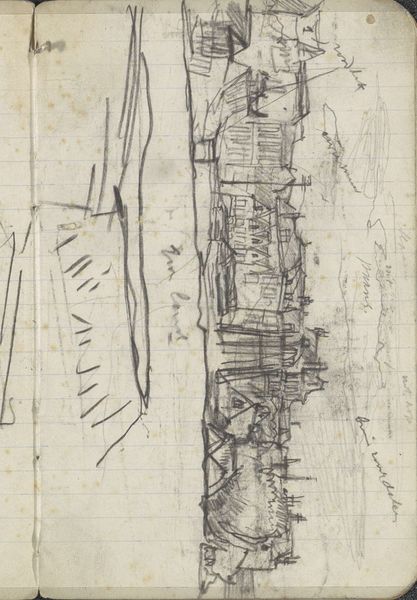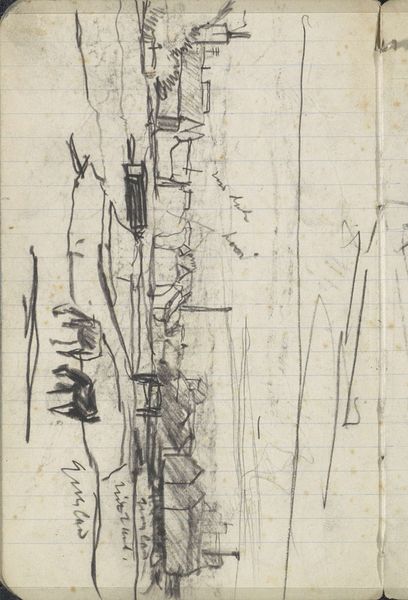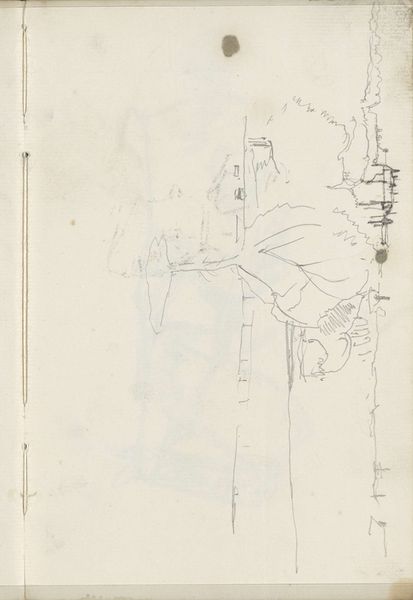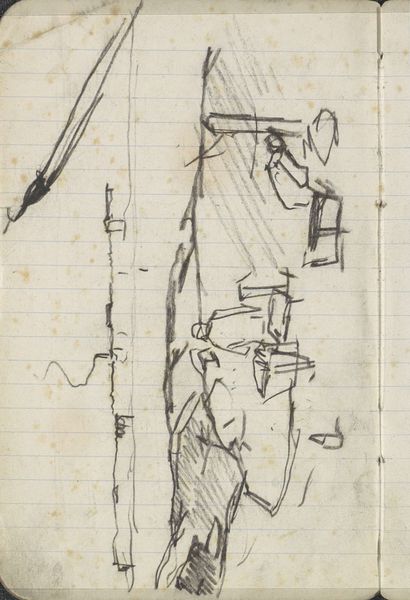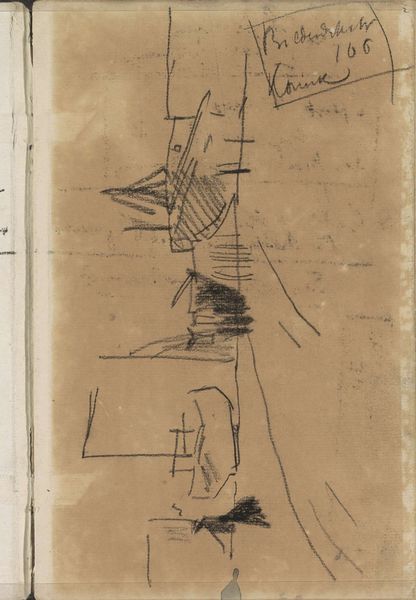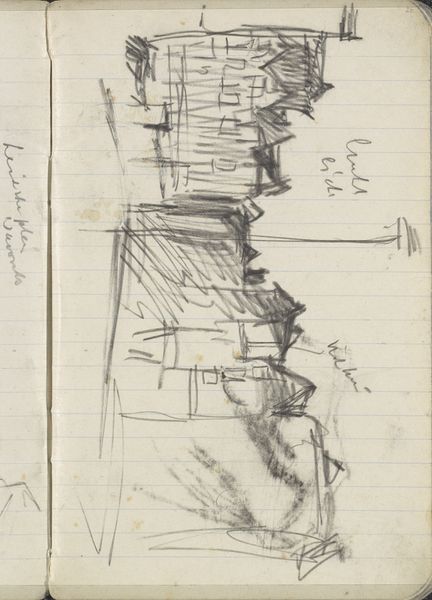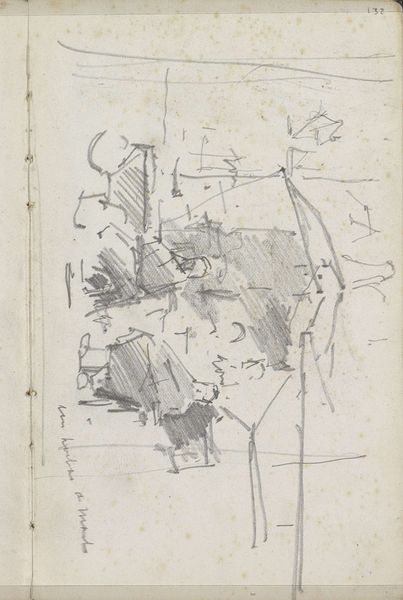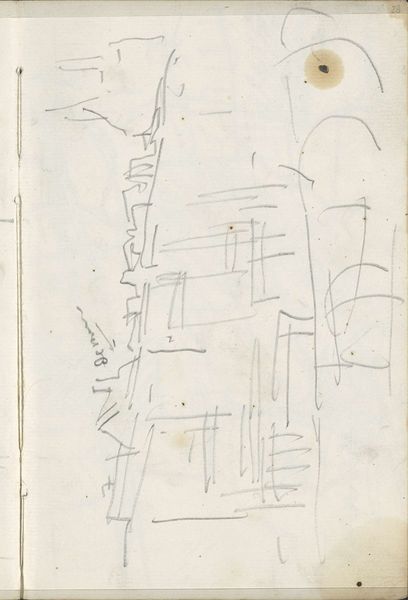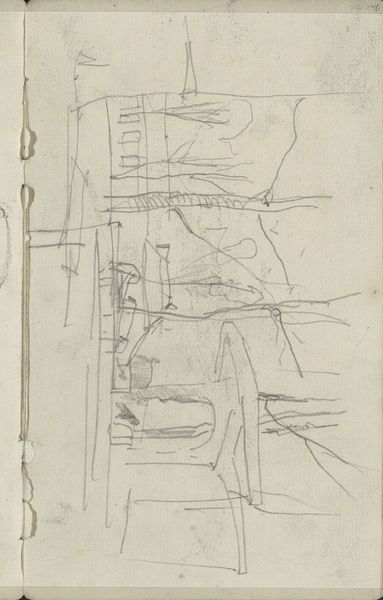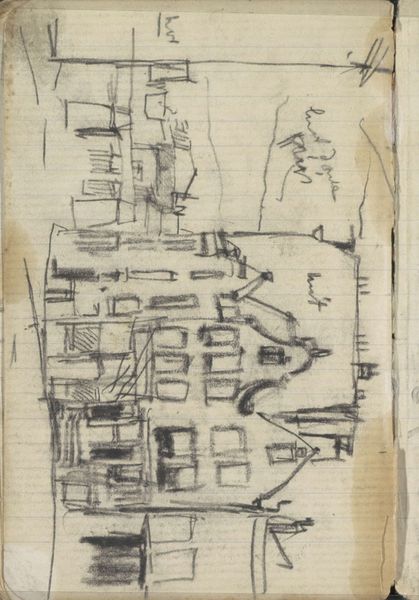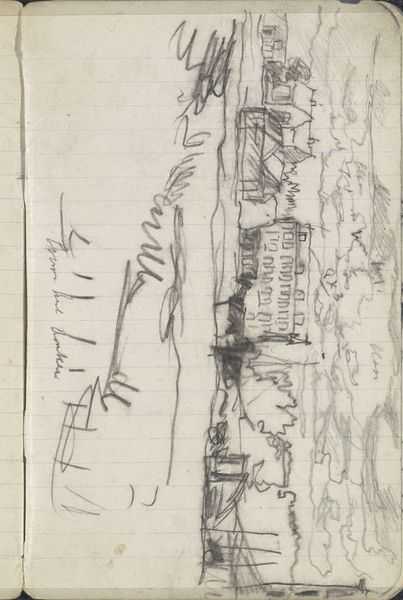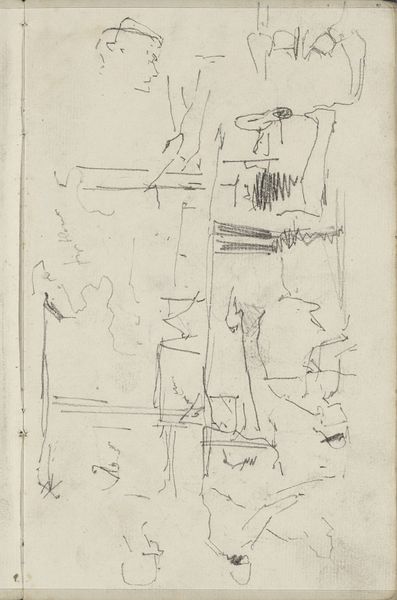
Copyright: Rijks Museum: Open Domain
Editor: So, here we have George Hendrik Breitner's "Gezicht in Amsterdam," made sometime between 1896 and 1897. It's a graphite drawing, and there's something so immediate and raw about it, captured on what looks like a page torn straight from a sketchbook. How do you interpret this work, given its materiality? Curator: I see this as more than just a cityscape; it's a record of labor and industrialization. Notice the heavy use of graphite, almost aggressively applied. It mirrors the gritty reality of Amsterdam at the time, shaped by the physical labor that built the city and sustained its inhabitants. What kind of work might Breitner have seen reflected in the scene he drew? Editor: I suppose he would have seen manual labor, construction… the port activity, perhaps? It makes you think about the lives of the people who actually constructed the buildings he sketched. Curator: Exactly! Breitner’s rapid sketching suggests a process of observation deeply entwined with the city’s pulse. Consider the lines, their thickness, their direction. Do they denote specific architectural details or suggest the frenetic energy of urban expansion, the materiality of construction itself? How does it contrast with traditional, polished cityscapes? Editor: I see what you mean. It's less about the beautiful architecture and more about the process, the raw energy behind it. It certainly clashes with those idealized landscape paintings. Curator: It brings labor and material to the forefront, rejecting the traditional hierarchy of artistic subjects. He focuses on the 'making of' instead of presenting a finished, refined product. Editor: I never thought about a simple sketch in terms of labor like this. It has shifted my perspective, making me appreciate the work and material conditions embedded within art. Curator: It's about understanding the art object as the product of specific social and material processes, which really helps contextualize Breitner's position as a modern artist.
Comments
No comments
Be the first to comment and join the conversation on the ultimate creative platform.
